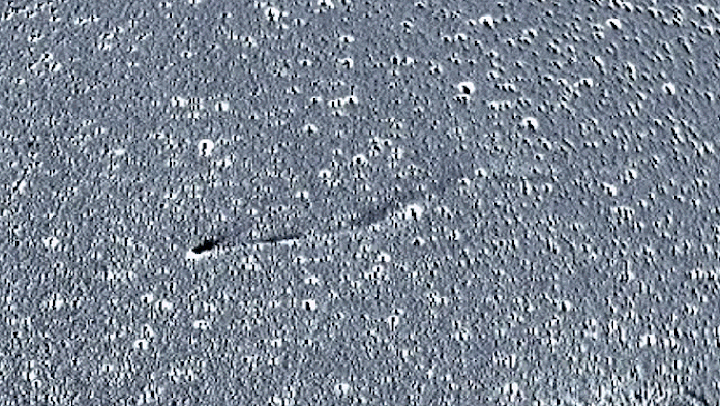23.12.2021

NASA's STEREO-A satellite captured this view of Comet Leonard on Dec. 14, 2021, using the satellite's SECCHI/HI-2 camera. (Image credit: NASA GSFC)
NASA's STEREO-A satellite caught this view of Comet Leonard as it continued to streak into the inner solar system last week. STEREO-A captured the warming comet as it cast off a gassy shroud and spiked in brightness.
Named for Gregory Leonard, an astronomer at the University of Arizona's Lunar and Planetary Laboratory who discovered the iceball in January 2021, Comet Leonard, or C/2021 A1, is a highly long-period comet. We're witnessing its first — and last — approach to the inner solar system for over 80,000 years.
In the past several days, as the comet neared the sun and heated up, it began to undergo "outbursts," in which it brilliantly throws off volatile material like gases and water ice. Those bursts appear as rapid changes in brightness, NASA officials wrote in an image description.
The image was captured by STEREO-A, a golf cart-sized telescope that launched in 2006 to observe the sun. (It launched with a twin, STEREO-B, but NASA lost contact with it in 2014.) STEREO-A has been watching Comet Leonard since November.
Leonard is the brightest comet of 2021, and it made its closest approach to Earth on Dec. 12 and to Venus on Dec. 17. But the comet's still coming closer to the sun. It will reach its closest point to our star on Jan. 3, 2022, at a distance of about 0.6 AU (56 million miles or 90 million kilometers). You can find out more about how to see Comet Leonard with these viewing tips from the comet's discoverer.
Quelle: SC
+++
A Christmas comet for Solar Orbiter

Comet Leonard, a mass of space dust, rock and ice about a kilometre across is heading for a close pass of the Sun on 3 January, and the ESA/NASA Solar Orbiter spacecraft has been watching its evolution over the last days.
The Solar Orbiter Heliospheric Imager (SoloHI) captured an animated sequence of images 17-19 December that shows comet Leonard streaking diagonally across the field of view with the Milky Way as a stunning backdrop. Venus and Mercury are also visible in the top right, Venus appearing brighter and moving from left to right.
The comet is currently on its inbound journey around the Sun with its tail streaking out behind. When SoloHI recorded these images, the comet was approximately between the Sun and the spacecraft, with its gas and dust tails pointing towards the spacecraft. Toward the end of the image sequence, our view of both of the tails improves as the viewing angle at which we see the comet increases, and SoloHI gets a side-on view of the comet.
A faint coronal mass ejection front is also visible moving from the right hand side of the frame in the final second of the movie.
SoloHI will continue observing the comet until it leaves its field of view on 22 December, and will be complemented by other instrument observations.
Ground-based telescopes and other spacecraft have also been following the comet on its journey through the Solar System and providing images, including NASA’s Solar Terrestrial Relations Observatory-A spacecraft – see here.
Comet Leonard, formally known as C/2021 A1 (Leonard), was discovered in January 2021 by Gregory Leonard, who spotted it in images taken from the Mt. Lemmon Observatory in Arizona. Its closest pass on 3 January 2022 will take it within 90 million kilometres of the Sun, slightly more than half Earth’s distance to the Sun. If it doesn’t disintegrate, its trajectory will fling it into interstellar space, never to return.
About Solar Orbiter
Solar Orbiter launched 10 February 2020 and is on a mission to provide the first views of the Sun’s uncharted polar regions, giving unprecedented insight into how our parent star works. It will investigate how intense radiation and energetic particles being blasted out from the Sun and carried by the solar wind through the Solar System impact our home planet, to better understand and predict periods of stormy ‘space weather’.
Quelle: ESA
